The Big House and the Irish Revolution
John Dorney looks at the burning of the Big Houses in the Irish Revolution of 1919-23.
Late on January 29, 1923, Lady Mayo was eating dinner with her husband, Lord Mayo, at their palatial home, Palmerstown house, in the Kildare countryside.
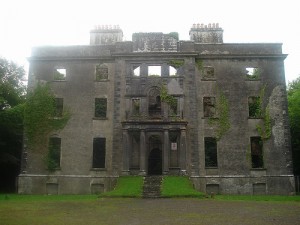
Times were unsettled; civil war was still fitfully raging between the anti-Treaty guerrillas of the IRA and the troops of the Irish Free State government. In an effort to stamp out the guerrillas’ will to resist, the Government had embarked on a policy of widespread executions. That day, six IRA men had been shot by firing squad at the military base at the Curragh.
Out of the darkness of the country night, a party of armed men approached Palmerstown House and knocked on the door. The butler refused to let them in but the men – anti-Treaty guerrillas – barged their way through the servants’ entrance. Bursting into the dining room, they told Lord and Lady Mayo they were going to burn the house in reprisal for the executions of their men that day at the Curragh.
They asked the Earl if he was a Free State Senator and he confirmed he was. ‘Are you going to shoot me?’ he asked the man covering him with a service rifle. “No, my lord: we are not going to shoot you, but we have our orders to burn the building.” “It is only right to say”, Lord Mayo recalled, “that the raiders were excessively polite”.
Still, they gave the pair only 20 minutes to remove valuables before they poured petrol in each room and set the house alight. By the time Free State troops and a fire brigade unit arrived from Newbridge, the house was already, ‘a flaming furnace’. By the following morning, the mansion, built in 1877, was ‘gutted’. [1]
The Big House and the Irish revolution
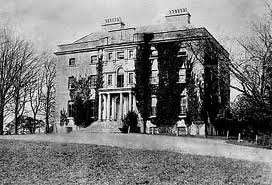 The ‘Big House’ or country mansion of the Anglo-Irish landed class, was a target of republicans throughout the Irish revolution of 1919-23.
The ‘Big House’ or country mansion of the Anglo-Irish landed class, was a target of republicans throughout the Irish revolution of 1919-23.
A total of 275 were burned out, blown up or otherwise destroyed between 1920 and 1923. Of these, by far the greatest number, 199, were destroyed, not during the conflict against the British, but in the period of intra-nationalist civil war between 1922-1923.[2]
The Irish nationalist narrative had always maintained that the land of Ireland had been stolen from its rightful, native Irish and Catholic, owners by the alien “Protestant Ascendancy” in the 15 and 1600s. Even more deeply ingrained in the popular psyche were the land struggles of the 19th century, aimed first at establishing security for tenant farmers and eventually at a transfer of land ownership from landlord to tenant. In 1914, the Irish Republican Brotherhood’s organ Irish Freedom still wrote of the land system as comprising of, “robbery, fraud and hatred of the people”.[3]
Once British protection had been withdrawn, the most radical elements of the nationalist revolution, in the anti-Treaty IRA, took the opportunity to sweep away the symbols of the old order in the countryside.
The Irish nationalist narrative had always maintained that the land of Ireland had been stolen from its rightful, native Irish and Catholic, owners by the alien “Protestant Ascendancy”
The War of Independence
As early as 1918, IRA organiser Ernie O’Malley had his Volunteers train in demesne grounds to, “rid them of their inherent respect for the owners. Even yet their fathers touched their hats to the gentry and the sergeant of the police”.
During the confrontation between the British and the IRA in 1919-1921, the Big House was made a target in reprisal for British burning of republicans’ houses. In June 1921, an order to burn loyalist houses in retaliation for British reprisals was issued by IRA GHQ.
As a result, the local seat of the Ascendancy was often burned because the republicans assumed that the old landed class were loyalists. Lord Listowel’s residence Convamore, for instance, was destroyed in April 1921 in retaliation for the destruction of the houses of six republicans and because he was, the attackers alleged, ‘aggressively anti-Irish’.
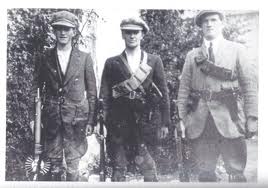
In April 1921, north Cork IRA leader, Liam Lynch, enraged by the destruction of several houses in reprisal for an IRA ambush declared, ‘six big houses and castles of their friends, the Imperialists will go up for this’.
Near Athlone in July 1921, the IRA burned Moydrum Castle, in reprisal for the burning of several homes of their sympathisers – itself a response to an IRA ambush. One Volunteer recalled, “An order was received from headquarters that a similar number of houses belonging to Loyalists or British supporters were to be burned by us as a counter-reprisal. Brigade headquarters, however, decided to burn Moydrum Castle instead … Moydrum Castle was the residence of Lord and Lady Castlemaine … a member of the British House of Lords and was always an opponent of Irish National aspirations.” [4]
In 1919-21, the country mansions were generally attacked as specific reprisals
A total of 30 Big Houses were burned in 1920 and another 46 in the first half of 1921, mostly in the conflict’s heartland of Munster, in counties Cork, Kerry, Tipperary, Clare and Limerick. [5]
The logic behind the burnings was clear; the old Ascendancy class were the backbone of the British presence in Ireland, destroying their palatial seats also hurt the British state, by forcing them to allocate troops and police to protect the gentry and also by undermining the deference some still felt for the old landed families.
Republicans seem to have taken gleeful pleasure in demonstrating the equality between the charred remains of their own houses, burned by British forces and those of the ‘castles’ of the ‘imperialists’.
However, in 1919-21, the country mansions were generally attacked as specific reprisals, and not made the subject of a concerted campaign as they were in 1922-1923.
The blitz on the Big Houses
During the period of civil war between Pro-Treaty (Free State) and Anti-Treaty (Republican) factions in June 1922-April 1923, 199 Big Houses went up in flames – over three times as many as in 1919-1921. There was also a difference in geography from the earlier period. In the civil war, burnings were more common in Leinster than in Munster. In the civil war, the only county in Leinster with no burnings was Laois (then Queens County).[6]
Republican commander Con Moloney ordered in July 1922, just after the outbreak of Civil War, that Unionist property should be commandeered to accommodate their men and some Big Houses were destroyed or damaged during the opening phase of the war, in which the Anti-Treaty fighters were driven from their fixed position around the country.[7] Nobles’ houses were also used as billets by both Pro-Treaty and Anti-Treaty forces.
Edith Somerville described how on one occasion soldiers ‘used a Rembrandt as dart board’, while the Earl of Ossory stayed in his castle to prevent republicans destroying it and saw it retaken by pro-Treaty forces. Considerable damage was done to the castle in the fighting; paintings were damaged, antiques were destroyed and windows smashed.[8]
However the most intense assault on the Big House came in early 1923. By then the anti-Treaty campaign had been reduced to a localised and small-scale guerrilla affair, fought by ever-dwindling bands, coordinated very loosely by a clandestine leadership under Liam Lynch, which Free State forces hunted from safe house to safe house.
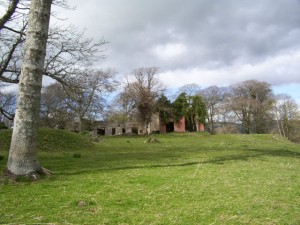
A Free State Army report of 21 January 1923 states, “with depleted numbers, lack of resources and unified control and almost complete ineffectiveness from a military standpoint, their [Anti-Treaty IRA] policy of military action is slowly changing to one of sheer destruction and obstruction of the civil government.”
The Minster for Agriculture, Patrick Hogan, wrote to Prime Minister WT Cosgrave; “House Burning [among Anti-Treaty Guerrillas] has become a matter of course”.[9]
Why did the Anti-Treatyites embark on a concentrated campaign against the Big House in early 1923? One reason was simply that it was easy to do at a time when their military capability was seeping away. Another, the stated reason, that it was reprisal against the political elite of the Free State for the execution of Republicans. Thirty seven of the houses destroyed were those of Senators, of whom about 20 were old landed families.
The Senate was the State’s upper house. The Senators were a soft target, many of them came from outside of the Nationalist, Catholic community and they were scattered around the country – difficult for the Free State to protect. Many had previously been unionists, Lord Glenavy for instance, chairman of the Senate, had helped Edward Carson to form a unionists ‘provisional government in 1912 to resist Home Rule. Attacking them was less likely to attract public outrage than killing directly elected nationalist TDs [members of the Dail or Parliament]. [10]
Less likely also to provoke lethal reprisals from the Government. When Sean Hales TD was gunned down in Dublin in December 1922, the Government immediately had four imprisoned republican leaders shot by firing squad in retaliation.
Destroying the Big Houses was easy for the Anti-Treaty IRA to do at a time when their military capability was weakening
But the campaign against the senators is only a partial explanation of the burnings. Most of the landed class were not senators and some of those burned out – such as Horace Plunkett, – were social reformers and even nationalists of a sort.
The Experience of the burnings
Another possible explanation for the arson campaign was to drum up popular support in the countryside by attacking and humbling the class who had once been masters of the country.
Certainly, much of the rural population had traditionally seen the “landlord” as an oppressive, alien ruling caste and there is little evidence of widespread sympathy for the victims of the campaign.
Crowds often came to loot the burnt-out mansions. After the burning of the Big House at Derreen, Kerry, “crowds of every description [came]…pulling, hauling, fighting for what they could take. The house is absolutely destroyed, the doors all smashed, every particle of furniture taken”. Similarly at Glenfarne, Leitrim, “the people came with carts and carried away… everything that was portable…so that only the roof was left and the roof went eventually.”[11]
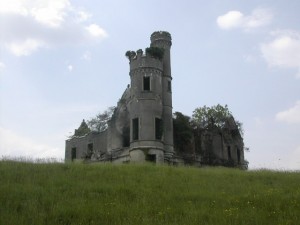
The campaign against Senators and the Big Houses was undoubtedly traumatic for those affected. George Moore, for instance, had to watch in February 1923 as a group of armed men demanded the keys to his mansion at Moore Hall and proceeded to set fire and lay bombs that destroyed the house and his beloved library. He remembered, “I could do nothing but stand by with the same feelings that one has when standing beside the open grave of a very dear friend.”[12]
But at the same time, the campaign was largely limited to violence against property rather than people. There were no massacres of the civilian “enemies of the republic”, no mass graves were filled up, no wholesale displacement either of Free State supporters or of former loyalists took place.
There is also, in the accounts of the burnings, a curious air of deference about the guerrillas. Earl Mayo, during the burning of Palmerstown House, thought the raiders were, ‘excessively polite’.
Patrick Campbell recalled that during the burning of the house of his grandfather (Lord Glenavy, Chairman of Senate) at Christmas time 1922, his mother ordered the IRA men to first save the children’s’ toys;
“ ‘Me train’, I cried, ‘Don’t let them burn me train!’‘Of course they won’t’, said my mother. She rounded on two of the men. ‘You’, she said, ‘go to the cupboard in the children’s bedroom and take out all the parcels you can find. And look out for the doll’s house, it’s fragile’. They shuffled their feet, deeply embarrassed. Several other men were throwing petrol around the hall. ‘Well, go on’, my mother shouted at them. ‘And leave your silly guns on the table, nobody’ll touch them’. By the time the first whoosh of petrol flame poured out of the windows, she had five of the men working for her, running out with armfuls of books, pictures, ornaments and our Christmas toys.”[13]
Compared to the attacks on the gentry during the Russian Revolution, the Irish experience was almost gentlemanly
Compared to, for instance, the attacks on the homes of the Russian gentry during the revolution of 1917-18, when the Bolsheviks urged the peasantry to, ‘loot the looters’, and the gentry themselves were often beaten or killed, the Irish affair looks almost gentlemanly.[14]
A self-limiting revolution
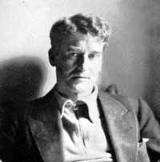 As even the likes of IRA leader Ernie O’Malley acknowledged, the actual power of the Ascendancy class was largely a thing of the past by the 1920s. “I cycled past many a broken down demesne wall, once the sign of an entrenched ascendancy, now the symbol of passing order…Virtue and strength was going from the leeches who had sucked life from the people”.[15]
As even the likes of IRA leader Ernie O’Malley acknowledged, the actual power of the Ascendancy class was largely a thing of the past by the 1920s. “I cycled past many a broken down demesne wall, once the sign of an entrenched ascendancy, now the symbol of passing order…Virtue and strength was going from the leeches who had sucked life from the people”.[15]
The 1903 Wyndham Act had subsidised Irish tenants with British government loans, repayable over 70 years, to buy out their landlords. Whereas in 1870, 97% of land was owned by landlords and 50% by just 750 families, by 1916, 70% of Irish farmers owned their own land. [16] These reforms, which amounted to a peaceful revolution in land-holding in Ireland, took the sting out of the land question and largely explain why there was so little violence against the persons, as opposed to the property of the old landed class in 1919-1923.
There was indeed a great deal of rural class conflict during the Irish revolution. The years 1919-1920 saw a wave of agrarian agitation in the west of Ireland, where cattle were “driven” off the land of big graziers, which was then occupied by poor farmers, indeed some of the Volunteers early actions in some areas were attacks on landlords, rent collectors or “land grabbers”. [17]
The civil war of 1922-23 was, for people such as Patrick Hogan, the first Free State Minister for Agriculture, in fact, a contest between ‘order’ and ‘anarchy in the countryside. Kevin O’Higgins, the Minister for Home Affairs, cited over 500 seizures of land by tenant farmers, burning of landlords’ property and a labour dispute in Kildare where shots had been exchanged.[18]
There was a great deal of rural class conflict during the civil war but the old Ascendancy class were almost irrelevant to it.
Part of the Free State Army, organized in a “Special Infantry Corps” was used to put down agrarian agitation across the country and a wave of strikes by agricultural labourers across south Leinster and north Munster.[19]
The Republicans for their part made some noises about social revolution. Ernie O’Malley approvingly quoted a programme that, “Under the Republic all industry will be controlled by the state for the workers’ and farmers’ benefit…all banks will be operated by the state…the lands of the aristocracy will be seized and divided”.[20]
But the Anti-Treaty IRA adopted nothing so radical as their objective. And in reality the “aristocracy” no longer controlled the land anyway. The Republicans never took an active part in the various class struggles that broke out between ranchers and small farmers, or between farmers and labourers – all of whom were predominantly Catholic and nationalist. Instead they concentrated their ire on the mostly defunct Anglo-Irish landed class.
Why this was so tells us something important about the Irish revolution, its origins and perceived purpose. Self-government for Ireland, in the form of Home Rule, was already on offer from the British government since 1912 – albeit limited to control of domestic affairs under the Empire. Land reform had already been implemented, though the landed class had been amply compensated.
The recourse to arms on behalf of Irish nationalists was essentially about speeding up these processes but also changing their meaning. Ireland would not be a grateful self –governing dominion under the crown, it would be an independent republic. Land redistribution was not an enlightened reform but a partial correction of a historic injustice.
The importance of such symbolism – viewed as a kind of correction of history – was what made the Treaty, a backsliding from the Republic where the King of England was head of state and where Ireland was a dominion under the Empire, so hard for many republican activists to accept.
The civil war of 1922-23 was in this sense, the Irish ‘Thermidor’ – that stage in a revolution where the more moderate forces step back from the most radical elements and suppress those former comrades who refuse to compromise.
The assault on the Big Houses was an attempt to symbolically destroy the colonial past and to show that the revolution was not over.
The assault on the Big Houses in early 1923 only makes sense in this context – as the Anti-Treatyites attempt to show that the revolution was not over. That they were determined not to accept a settlement where the likes of Lord Glenavy presided over the Senate and determined to blot out the reminders of what they thought of as the British colonial past.
Conclusion
As a military tactic, the burning campaign of early 1923 was inconsequential to the outcome of the Civil War. Ernie O’Malley, by then imprisoned, wrote, “I see the necessity for burning but it does not go hand in hand with fighting; it will eventually react on us”.[21]
In the campaign against the British, burning Big Houses may have deterred reprisals against republicans’ homes. In the intra-nationalist phase of the conflict, the Free State forces, who had excellent intelligence on their former comrades, did not have to resort to reprisals against property (revenge killings of republicans were another matter). Burning down the houses of the old landed class made no difference to Free State’s ability to round up and intern anti-Treaty fighters.
The revolution’s legacy to the land question, as in many other areas, was profoundly ambiguous. The Pro-Treaty side, inheritors of the moderate revolutionary tradition – conciliatory to Britain, legalistic and socially conservative – not only put down those who wanted to continue the nationalist revolution, they also made peace with the former Ascendancy class. Lord Glenavy, for instance served in the Senate until 1928.
Lord Mayo was compensated by the Free State in 1925 for the destruction of his mansion at Palmerstown house to the tune of £15,000.[22]
On the other hand, one of the first major acts of the Free State was to set up a Land Commission for the compulsory purchase of land, “for the purpose of relieving congestion”, in order to drain the remaining venom from the land question. And when the Cumann na nGaedheal had to decide in 1930 on what qualified as a National Monument, to be afforded state protection, the Big Houses were specifically excluded.[23]
As for the republicans, once they entered power by democratic means in 1932, they set about recreating the Irish state in their own image. The Senate, with its grandee representatives was abolished. Land annuities, repayments to the British government for the land reforms of the early 20th century, were stopped. Eventually around 10% of the money owed was paid as a final settlement in 1938.
Today, in a very different Ireland, the power of the Big House, even as a symbol, is largely gone. In Mayo there is a campaign to restore Moore Hall, burned out in February 1923, as a cultural site and tourist attraction. We have, perhaps, come full circle.
See also the follow up article The Burning of the Big Houses revisited 1920-1923.
References
[1] Dooley, Terence, The Decline of the Big House in Ireland p 174, Leinster Leader, February 3, 1923 and 12 December 1925
[2] Peter Martin, Unionism: The Irish Nobility and the Revolution 1919-23 in The Irish Revolution, Joost Augustein (ed), Palgrave 2002. P157
[3] Irish Freedom, April 1914
[4] Coplen, Richard, The Burning of Moydrum Castle, Westmeath Independent, Wednesday, 21st October, 2009
[5] Martin, Irish Nobility and the Revolution, p156-157
[6] Dooley, p189
[7] Michael Hopkinson, Green Against Green, The Irish Civil War, p 195
[8] Martin p158
[9] Dooley, p191
[10] M.E Collins, Ireland 1868-1966, p431, Dooley, Decline of he Big House, p189
[11] Dooley, Decline of the Big House, pp.174, 196
[12] George Moore, Letter to the Morning Post, February 13, 1923
[13] Cited in Litton, Helen, Illustrated History of the Irish Civil War, p113 Wolfhound Press, 1995, p113.
[14] See Orlando Figes, A People’s Tragedy, The Russian Revolution 1891-1924, p520-536
[15] Ernie O’Malley, On Another Man’s Wound, (Anvil 2002) p94
[16] Haughton, Graham, The Economy of Ireland, pp19 – 25
[17] Fergus Campbell, Land and Revolution, Nationalist Politics in the West of Ireland 1891-1921,p 281
[18] Hopkinson, Green Against Green, p 222
[19]Eunan O’Halpin, Defending Ireland, The Irish State and its Enemies, p44
[20]Cormac O’Malley, No Surrenders Here, The Civil War Papers of Ernie O’Malley, 1922-1924, p152-153
[21] No Surrenders Here!, p362
[22] Leinster Leader 12 December 1925
[23] Carew, Mairead, ‘Politics and the definition of National Monuments: ‘The Big House Problem’, Journal of Irish Archaeology Vol XVIII, 2009, pp 129-139